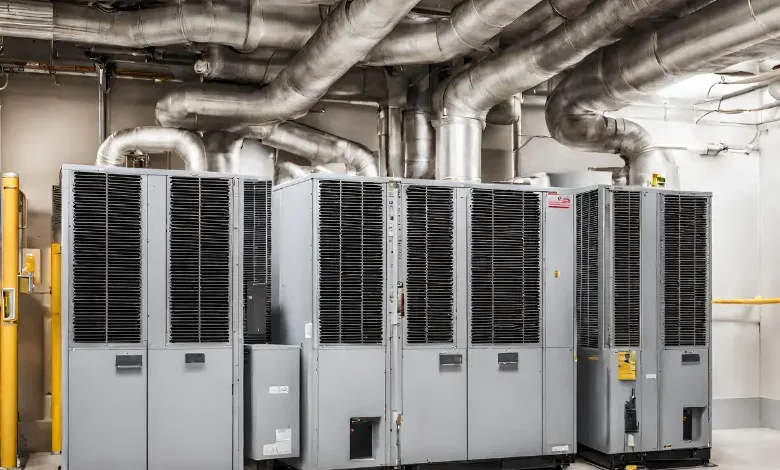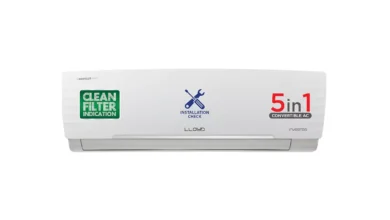Unraveling the Mysteries: Understanding Commercial HVAC Systems

In the intricate ballet of maintaining a comfortable and conducive indoor environment for businesses, Commercial HVAC (Heating, Ventilation, and Air Conditioning) systems emerge as the unsung heroes. Far beyond the simplistic temperature control mechanisms we associate with residential heating and cooling, these systems represent a sophisticated integration of components and functions. In this extensive exploration, we’ll dive deep into the intricacies of Commercial HVAC systems, dissecting their components, functions, and the critical role they play in shaping a comfortable and energy-efficient workspace.
Also read: Best AC in India 2024
Components of Commercial HVAC Systems
1. Heating Systems
Commercial heating solutions span a spectrum of technologies. According to a report by the International Energy Agency (IEA), heat pumps have shown to be up to 300% more energy-efficient than traditional heating systems. Furnaces, powered by electricity, natural gas, or oil, generate heat through the combustion of fuel. Boilers, utilizing various fuels, heat water to produce steam, distributing warmth through radiators or underfloor systems.
2. Ventilation Systems
At the heart of indoor air quality (IAQ) management lies ventilation. Commercial buildings demand efficient systems to expel pollutants, control humidity, and replenish indoor air with fresh, oxygen-rich air. Ventilation systems incorporate air ducts, exhaust fans, and air exchange units. According to the Environmental Protection Agency (EPA), indoor air can be two to five times more polluted than outdoor air. Advanced heat recovery ventilation (HRV) and energy recovery ventilation (ERV) systems capture and repurpose heat from outgoing air, optimizing energy consumption.
3. Air Conditioning Systems
For cooling, Commercial HVAC systems rely on a diverse array of air conditioning technologies. According to the U.S. Department of Energy (DOE), heating and cooling account for about 48% of the energy use in a typical U.S. home, and commercial buildings are no exception. Traditional central air systems, prevalent in many commercial spaces, are complemented by advanced Variable Refrigerant Flow (VRF) systems. VRF systems introduce zoned temperature control, allowing distinct areas of a building to maintain personalized climate settings, maximizing energy efficiency and occupant comfort.
4. Control Systems
Modern Commercial HVAC systems are masterpieces of control engineering. Utilizing sophisticated control systems, businesses can precisely regulate temperature, humidity, and air quality. Programmable thermostats and building automation systems empower businesses to schedule temperature adjustments based on occupancy patterns and external weather conditions, contributing to both comfort and energy efficiency.
5. Ductwork
Ductwork forms the circulatory system of a Commercial HVAC setup. Meticulously designed and well-maintained ducts ensure the efficient distribution of heated or cooled air throughout the building. Regular inspections, cleaning, and sealing are imperative to prevent the accumulation of contaminants, safeguarding indoor air quality and optimizing system performance.
Functions of Commercial HVAC Systems
1. Temperature Control
The fundamental role of HVAC systems lies in temperature regulation. Commercial buildings, often characterized by diverse spaces with distinct heating and cooling needs, necessitate systems that can adeptly adapt. HVAC systems are meticulously engineered to address these variations efficiently, ensuring a consistent and comfortable indoor environment for occupants.
2. Indoor Air Quality (IAQ) Management
Beyond temperature, the management of indoor air quality is paramount. HVAC systems, equipped with an array of filtration technologies, rid the air of pollutants, allergens, and contaminants. High-efficiency particulate air (HEPA) filters, ultraviolet (UV) germicidal lamps, and electronic air cleaners collectively contribute to elevating IAQ in commercial spaces, promoting a healthier environment for occupants.
3. Humidity Control
Regulating humidity levels is a multifaceted challenge for Commercial HVAC systems. Maintaining optimal humidity is crucial for both occupant comfort and the protection of equipment and materials within the building. According to the American Society of Heating, Refrigerating and Air-Conditioning Engineers (ASHRAE), the recommended indoor relative humidity range is between 30% and 60%. Advanced HVAC systems employ dehumidification techniques, such as desiccant wheels and condensate removal systems, to achieve and sustain ideal humidity levels.
4. Energy Efficiency
Commercial HVAC systems are in a perpetual quest for greater energy efficiency. Evolving technologies, including variable speed compressors, energy recovery ventilators, and smart controls, contribute to reducing overall energy consumption. Building owners can further enhance energy efficiency by investing in Energy Star-rated equipment and implementing comprehensive energy management strategies.
Challenges and Solutions
1. Maintenance and Upkeep
The longevity and efficiency of Commercial HVAC systems hinge on meticulous maintenance. Proactive measures, such as scheduled inspections, cleaning, and equipment tuning, can identify and rectify potential issues before they escalate. According to a study by the Consortium for Energy Efficiency (CEE), regular HVAC maintenance can result in energy savings of up to 15%. Implementing a comprehensive preventive maintenance program becomes imperative, ensuring that HVAC systems operate at peak performance, reducing the risk of breakdowns, and extending the lifespan of components.
2. Energy Consumption
While modern systems inherently embody energy efficiency, businesses can take additional steps to curtail energy consumption. The integration of smart technologies, such as occupancy sensors, demand-controlled ventilation, and predictive analytics, allows HVAC systems to dynamically adjust operations based on real-time occupancy levels, optimizing energy use. Regular energy audits serve as valuable tools to identify areas for improvement and guide businesses in making informed decisions to enhance overall efficiency.
3. Adaptability and Zoning
Commercial buildings often house a mosaic of spaces with varying heating and cooling needs. Implementing zoning systems becomes paramount, enabling businesses to customize temperature control based on specific areas. According to the U.S. Department of Energy, proper zoning can lead to energy savings of 20% or more in commercial buildings. By dividing a building into zones and regulating the HVAC system accordingly, businesses can achieve a delicate balance, optimizing both comfort and energy use to meet the unique requirements of each space.
Conclusion
Commercial HVAC systems stand as technological marvels, working tirelessly to create a comfortable, healthy, and productive workspace. The nuanced understanding of these systems empowers businesses to make informed decisions, ensuring the well-being of both occupants and the bottom line. As technology continues its march forward, the future of Commercial HVAC promises even greater efficiency, sustainability, and innovation, solidifying its role as a cornerstone in the quest for optimal indoor environments. Businesses that embrace cutting-edge solutions and adhere to best practices position themselves not only for success but for a future where the quality of the indoor environment is non-negotiable.





